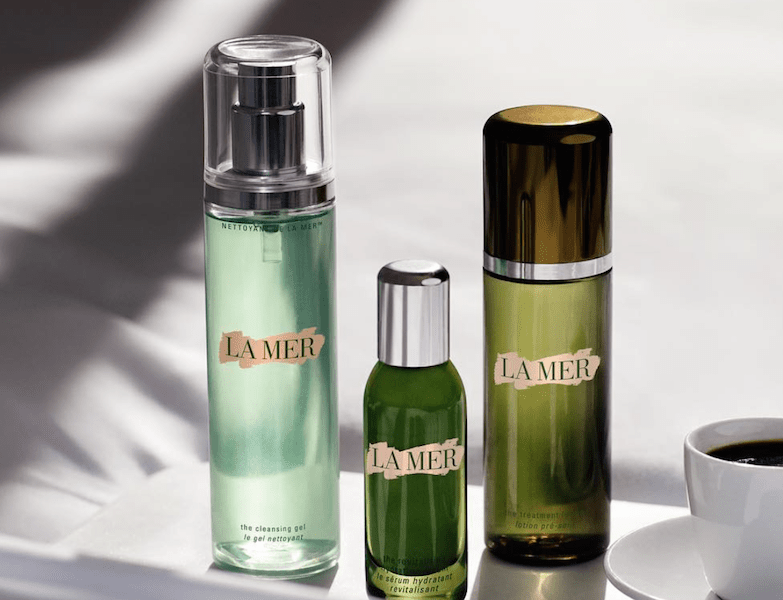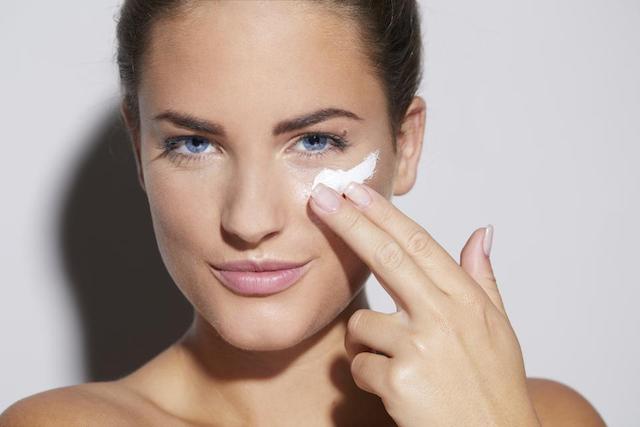By: Ellie King
Twenty-two-year-old SMU senior Hannah Abu-Eideh wakes up every morning, walks to her vanity, and applies her extensive skincare routine. First, she pulls out a bottle of Glossier jelly cleanser with its familiar, millennial pink logo, and empties two pumps into her hand. After gently cleansing her skin, she spreads on a thin layer of Kiehl’s ultra facial toner to brighten her complexion and refine her pores. Those two items alone cost $34; however, add on the next three steps of her routine, which include Sunday Riley serum ($158), Glossier moisturizer ($22), and the occasional Peter Thomas Roth mask ($52), and the total equals roughly $280.
That’s a hefty sum for most college students.
“I justify spending my money on skincare because how you take care of your skin now affects how your skin looks in the future,” Abu-Eideh said. “I like to use a lot of French skincare because everyone in France looks so young and has the glowing skin that everyone wants nowadays. I don’t know if it’s something in the water or something in the skincare, but I’m buying into whatever it is.”
But the truth is, Abu-Eideh and other SMU students may be paying way too much.
Many times when buying a pricier skin care product, we’re paying for the luxury of a more complicated formula and expensive packaging.
“Typically professional brands that have been developed by doctors use higher concentrations of very effective active ingredients, and prices are high when they are sold only in doctors’ offices or med spas,” Dr Vinita Schroeder, a Dallas allergist-immunologist and cosmetologist, said. “Some reputable drug store brands are very good and have the same ingredients as the luxury brands, but they cut costs in production or how it’s formulated. This may result in decreased quality of the product’s texture or decreased shelf life.”
According to cosmetic chemist Joyce de Lemos, in an interview with Byrdie, more prominent brands often take a formula from one brand that’s doing well, decorate it and repackage it for another brand. To up the prices, these brands will incorporate proprietary ingredients sourced from exclusive labs that drugstore brands can’t afford to contract with, or they will add elements like signature scents and expensive packaging. However, removing these “exclusive” elements, as many drugstore brands do, leaves a base product that is almost exactly the same, and one that can also produce very similar results.
When making beauty purchases, it’s important to do some research and to know what ingredients are effective, in order to make the wisest (and most wallet-friendly) choices.
And don’t be swept away by high-quality packaging that might include glass containers, several layers of materials, embossed seals, metallic finishes, and expensive elements that emulate luxury to justify paying top-dollar.
Drugstore brand packaging often uses simpler, less expensive containers, plastic not glass, without the inserts, materials, and finishes used by the high-quality brands. But the lower quality packaging does not necessarily indicate that the product quality or performance is any better or worse.
“I honestly had no idea that so much went into skincare prices,” said Becca Romero, a senior Advertising major at SMU. “I always expected that the more expensive the product, the better it was.”
Different people require different skincare regimens and ingredients, but according to Schroeder, sunscreen containing zinc oxide is the single most necessary element in a skincare routine, followed by antioxidants such as vitamin C and ingredients for cell turnover, such as retinol.
By identifying the essential ingredients and eliminating the unnecessary ones, you may find your desired skin results in a drugstore brand instead of the hundred dollar luxury brand you’ve been pondering.
“Typically, over-the-counter retinols are very good and you can find quality sunscreen over-the- counter as well,” Schroeder said. “Vitamin C is a little more tricky with the OTC ones not being as effective and having a less pleasing texture.”
While a product’s ingredient itself may cost $20, it doesn’t mean the product costs $20 to produce. The RoC Retinol Correxion Max Daily Hydration Anti-Aging Crème is one of the most highly reviewed drugstore retinol products on the market, providing 24-hour hydration and the benefits of retinol for only $25.
According to a report by Zion Market Research, the global cosmetic skin care market was valued at nearly $140 billion in 2017 and is expected to generate revenue of around $190 billion by the end of 2023.
Multiple factors determine the price of the product. These include the ingredients themselves, the scale of production, packaging, testing, research and development, marketing and advertising, salaries, rent, taxes and psychology.
For instance, plant-derived extracts cost much more than synthetic ingredients that can be mass produced inexpensively. The scale of production also matters because prices are often lower for items when more units are sold. Additionally, a product in a glass bottle or custom packaging is more expensive than plain plastic jars.
“I like to buy a lot of skincare that looks pretty,” said Jillian Owens, a senior Accounting major at SMU. “I just feel like if it has cool packaging, then it has to work well.”
Drugstore brands like Olay and Neutrogena keep their packaging and formulas simple and rely on volume to lower the costs, while high-end brands like Estee Lauder and La Mer focus more on the overall experience, like fancy packaging, smoother textures, and rare extracts, knowing their customers are willing to pay a pretty penny.
Skincare lovers could spend $175 for one ounce of Creme de la Mer at Nordstrom or $22 for the same amount of Mario Badescu Seaweed Night Cream at Ulta.
Both La Mer and Mario Badescu’s products use marine plant extracts to create deeply moisturizing face creams. One main difference is La Mer’s thicker texture and signature scent.

What else accounts for the $153 price difference?
La Mer’s jar is custom-made and much more expensive than standard packaging. But beyond the elegant exterior and regardless of manufacturing costs, a La Mer product under $50 just doesn’t fit the brand’s story or desired demographic. Mario Badescu tells a different story. It is an accessible, drugstore brand with quality ingredients made for the masses.
One might be fancier, but at the end of the day, they both do the same job.
“Next time I go to the drugstore I’m definitely going to look for some cheaper versions of my skincare products,” Romero said. “I think we can all be a little better to our skin and our bank accounts.”
https://www.instagram.com/p/BqxqkjYnbc1/







